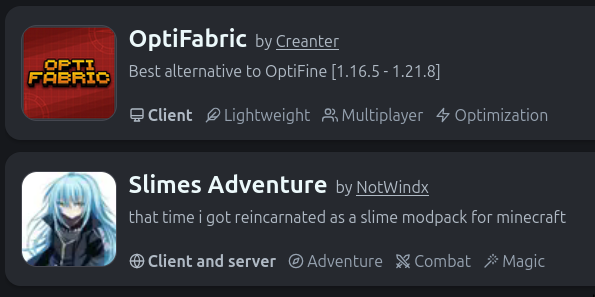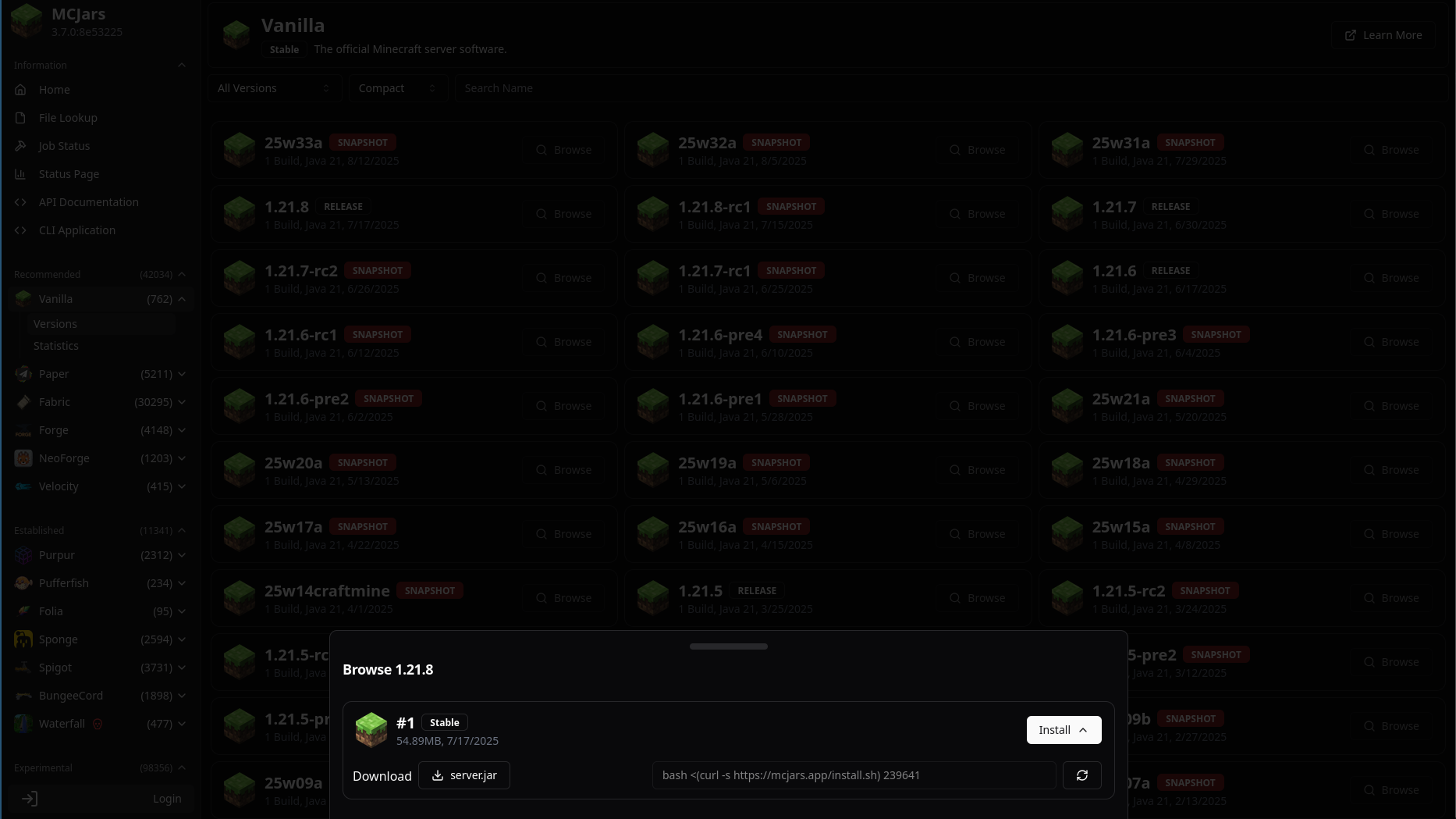free-oracle-minecraft-server
MCVCLI
This is my recommended way to setup a minecraft server, as ultimately it is the simplest. You install a command using rust, and then just run a couple commands. Very convenient to automate with shell scripts as well, since it is so simple if you so desire.
Install MCVCLI
To be able to use the command mcvcli, you first need to install Rust.
Once Rust is installed, you should be able to use Cargo. If not, try running rustup update
And once you have rust installed, you can install mcvcli via running the following command:
cargo install mcvcli
Fairly simple stuff.
If you need an explanation of what which command does, you can add -h to any mcvcli command, and it will display all the possible options, the command structure, and more.
Creating a server
To create a minecraft server, navigate to the directory you want to create the server in, and run:
mcvcli init
This will guide you through the setup. For the first time you are running this command, I recommend you to let it guide you.
Then, run:
mcvcli start -de
This will start the server in the background, and let you check on if it is running with mcvcli status.
If you want to run commands, you can then run mcvcli attach, where you will be able to run commands in the server such as:
- op [username]
- say [message to players]
- etc.
What Now?
Now, I recommend reading what to do after installing. Nothing else on this page is necessary, and you will likely learn if you experiment. However, if you wish to learn more, read the following:
Advanced mcvclI
Read the below if you so desire.
After you have made a server and ran it, there are a couple things that I would recommend.
First, run mcvcli -h. This will display all the possible subcommands you can display at this level.
Read through them, what I consider to be the most important ones are:
- start (-d -e)
- stop
- status
- backup
Most commands have the option of adding a subcommand help, however as the mcvcli init command instead would create a folder help if you tried that, I recommend using -h.
Init
Options:
- -f, –file : if you have a specific file to use as a server file, if not you can specify
installormodrinth - -t, –type : modlauncher / type of server you want. EG Vanilla, Forge, Fabric, Spigot, or other. Based on https://mcjars.app
- -v, –version : a number, literally a Minecraft Release version number such as 1.21.7
- -b, –build : a number, based on the numbers seen at https://mcjars.app
- -r, –ram : MB of RAM to allocate to the server
- -j, –java : Java version to use, haven’t used it yet
Be aware, depending on what you choose between these, not all options will be cross compatible. EG if you choose -f modrinth, and then select a Fabric server modpack, and then have -t forge as the type of server, it will be incompatible.
File
install just tells the program to install a jar file from the internet
modrinth tells mcvcli to install a jar file based on a modrinth modpack that has ‘server’

NOTE: The relevant modpack must claim to be server compatible to show up in the Modrinth list.
Furthermore, if you do not find your modpack, you may select search in order to have the program search through the modrinth website, looking for servers to download
Build
This only really matters if doing a modded server, if doing a vanilla server, you will only have 1 build available to you. See below:

Install
Install is similar to init, however it has fewer options.
The options install doesn’t have all the same
Start
The main option:
- -d, –detached : lets you run the server in the background, and go back to it later
- -e, –eula : automatically accepts the eula, saving you one step when starting the server, and preventing you from needing to edit the server.properties file
- -t, –timeout [time] : time the server waits to stop, in seconds
Note: I have not experienced a meaningful difference when using -t, so I am not sure what affect it has on the actual server.
Stop
Safely stops the server, letting it save and kick players without corrupting the world.
The main option is -t, similar to start. Again, unsure what it does.
Status
Tells the user if the server is running or not. If the server is running, it also tells you important information such as:
- memory use
- time running
- start time
Backup
This command can be used to create custom formatted backups, list them, delete them, and restore the server to a backup (ie rollback the server).